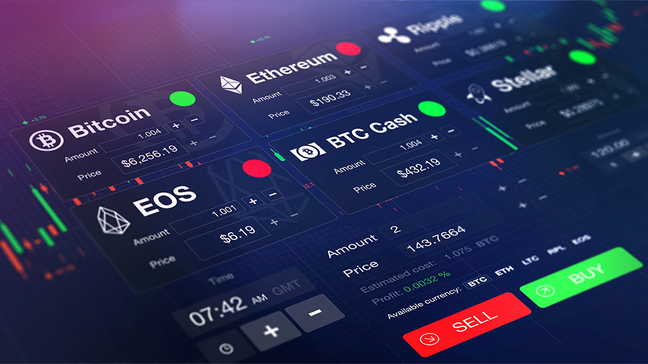
Crypto Trading Platforms: A New Era of Digital Finance
As the world becomes increasingly digitized, the financial landscape is also shifting dramatically. One of the most significant developments in recent years has been the rise of Crypto Trading Platforms click here, which have transformed the way individuals and institutions trade digital assets. This article will explore the evolution of these platforms, their current state, challenges they face, and what the future might hold for crypto trading enthusiasts.
The Evolution of Crypto Trading Platforms
Crypto trading platforms have come a long way since the inception of Bitcoin in 2009. The early days of cryptocurrency trading were characterized by limited options, high volatility, and significant security risks. Initially, trading was largely conducted on forums and peer-to-peer platforms, but as interest grew, more structured exchanges began to emerge.
In the early 2010s, the first dedicated cryptocurrency exchanges appeared, such as Mt. Gox, which quickly became one of the most popular platforms for trading Bitcoin. However, the collapse of Mt. Gox in 2014 due to hacking incidents highlighted the intrinsic risks associated with crypto trading. This event acted as a catalyst for the development of more secure and reliable trading platforms.
Since then, the industry has witnessed a proliferation of exchanges, including centralized platforms like Binance, Coinbase, and Kraken, as well as decentralized exchanges (DEXs) like Uniswap and SushiSwap. Each type of platform offers unique advantages and disadvantages, catering to different types of traders and their varying needs.
Types of Crypto Trading Platforms
When choosing a crypto trading platform, users encounter various types, each with distinct features and functionalities. Understanding these types can significantly aid in selecting the right platform for individual trading needs.
Centralized Exchanges (CEXs)
Centralized exchanges are the most common type of trading platform. They act as intermediaries between buyers and sellers, providing a user-friendly interface and a wide range of trading pairs. Notable examples include Binance, Coinbase, and Bitfinex.

These platforms often offer additional features such as advanced trading tools, staking options, and educational resources. However, users must trust these platforms with their funds, which exposes them to risks such as hacking and regulatory issues.
Decentralized Exchanges (DEXs)
Decentralized exchanges allow users to trade cryptocurrencies directly with one another without the need for a central authority. DEXs like Uniswap and PancakeSwap use smart contracts on blockchain networks to facilitate trades. One of the primary advantages of DEXs is enhanced security and privacy, as users maintain control over their funds at all times.
However, DEXs may have lower liquidity and can be more complex for beginners, as they often require a deeper understanding of cryptocurrency wallets and transaction processes.
Hybrid Exchanges
Hybrid exchanges combine features of both centralized and decentralized exchanges. They aim to provide the security of DEXs while offering the user experience and liquidity typically found on CEXs. Examples include Nash and Qtrade, which leverage innovative technologies to create a seamless trading experience.
The Challenges Facing Crypto Trading Platforms
Despite their rapid growth and popularity, crypto trading platforms face a variety of challenges that can impact users and the industry as a whole.
Security Concerns
One of the most significant challenges is security. Hacking incidents have led to considerable financial losses for traders and tarnished the reputations of many platforms. Consequently, robust security measures, including two-factor authentication, cold storage, and regulatory compliance, have become essential for attracting and retaining users.

Regulatory Landscape
The regulatory environment surrounding crypto trading is complex and continually evolving. Different countries have different approaches to cryptocurrencies, and exchanges often have to navigate a web of regulations to operate legally. Compliance can be costly and time-consuming, delaying the launch of new features and services.
Market Volatility
The crypto market is known for its extreme volatility, which can pose risks for traders. Price fluctuations can affect trading strategies and lead to unintended losses. Platforms must provide tools and resources to help users manage these risks effectively.
Future Prospects of Crypto Trading Platforms
As the crypto industry matures, the future of trading platforms looks promising. Innovations in technology, increasing regulatory clarity, and a growing user base signal potential growth and development in the space.
Integration of AI and Machine Learning
The integration of artificial intelligence (AI) and machine learning into trading platforms could revolutionize the trading experience. These technologies can facilitate better market predictions, automate trading strategies, and enhance risk management, ultimately improving user outcomes.
Increased Focus on User Experience
To attract a broader audience, crypto trading platforms will increasingly prioritize user experience. This includes creating intuitive interfaces, providing educational resources, and enhancing customer support. Platforms that successfully address user needs will likely succeed in the competitive landscape.
Expansion of Regulatory Frameworks
As governments worldwide continue to develop regulatory frameworks for cryptocurrencies, clarity will increase, fostering greater confidence among users. This regulatory stability will encourage traditional finance participants to engage more actively in the crypto space.
Conclusion
Crypto trading platforms have transformed the way individuals engage with digital currencies. From their humble beginnings to the present-day options available, these platforms have evolved to meet the demands of an increasingly sophisticated user base. Despite the challenges of security, regulation, and market volatility, the future of crypto trading platforms appears bright, driven by innovation and a commitment to enhancing the trading experience.
As more investors and traders enter the crypto market, understanding these platforms becomes crucial for making informed decisions. Whether you are a seasoned trader or just starting your crypto journey, staying aware of the trends, challenges, and advancements in crypto trading platforms will empower you to navigate the exciting world of digital finance successfully.

Comment (0)